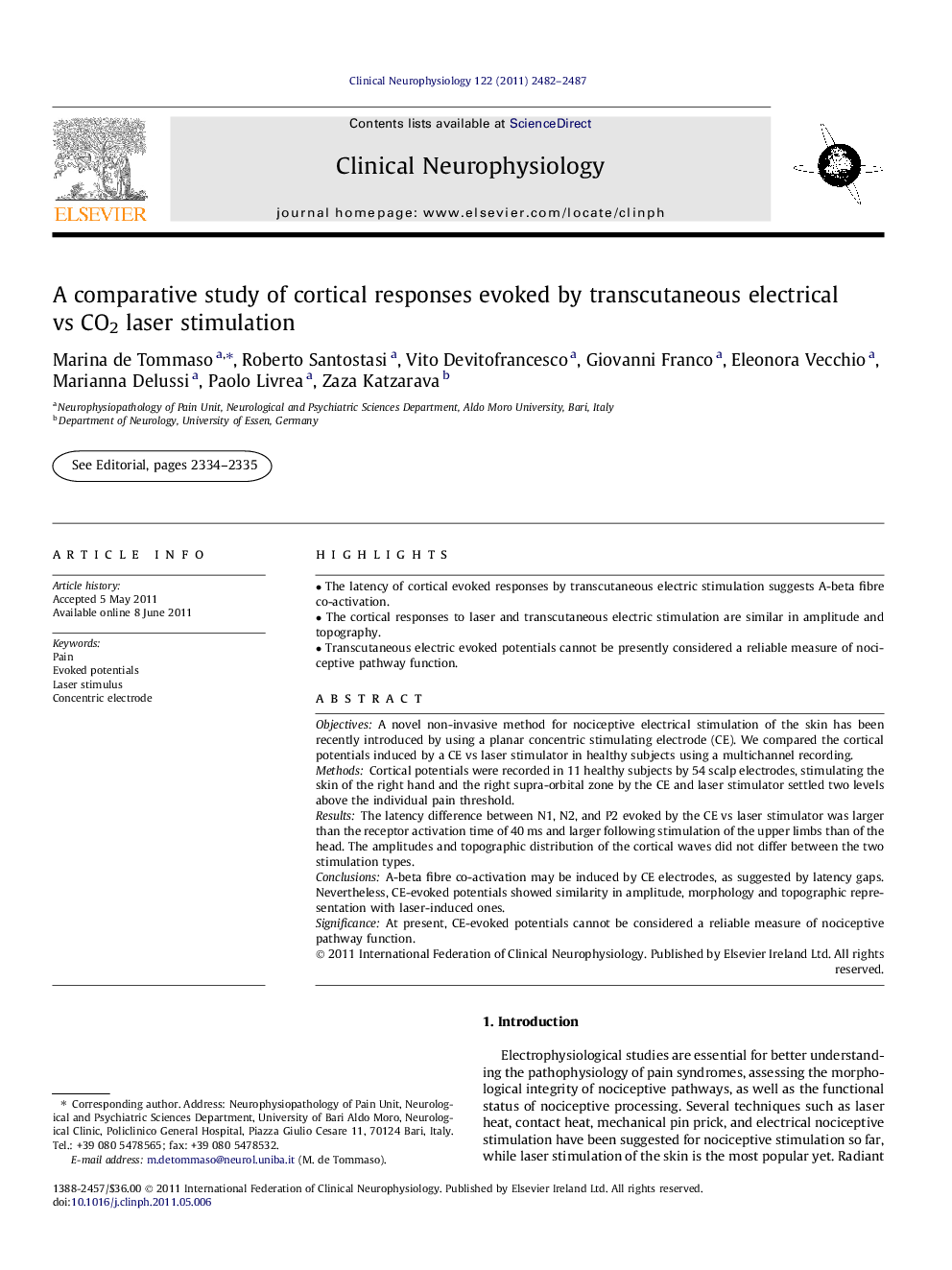| Article ID | Journal | Published Year | Pages | File Type |
|---|---|---|---|---|
| 3043986 | Clinical Neurophysiology | 2011 | 6 Pages |
ObjectivesA novel non-invasive method for nociceptive electrical stimulation of the skin has been recently introduced by using a planar concentric stimulating electrode (CE). We compared the cortical potentials induced by a CE vs laser stimulator in healthy subjects using a multichannel recording.MethodsCortical potentials were recorded in 11 healthy subjects by 54 scalp electrodes, stimulating the skin of the right hand and the right supra-orbital zone by the CE and laser stimulator settled two levels above the individual pain threshold.ResultsThe latency difference between N1, N2, and P2 evoked by the CE vs laser stimulator was larger than the receptor activation time of 40 ms and larger following stimulation of the upper limbs than of the head. The amplitudes and topographic distribution of the cortical waves did not differ between the two stimulation types.ConclusionsA-beta fibre co-activation may be induced by CE electrodes, as suggested by latency gaps. Nevertheless, CE-evoked potentials showed similarity in amplitude, morphology and topographic representation with laser-induced ones.SignificanceAt present, CE-evoked potentials cannot be considered a reliable measure of nociceptive pathway function.
► The latency of cortical evoked responses by transcutaneous electric stimulation suggests A-beta fibre co-activation. ► The cortical responses to laser and transcutaneous electric stimulation are similar in amplitude and topography. ► Transcutaneous electric evoked potentials cannot be presently considered a reliable measure of nociceptive pathway function.
